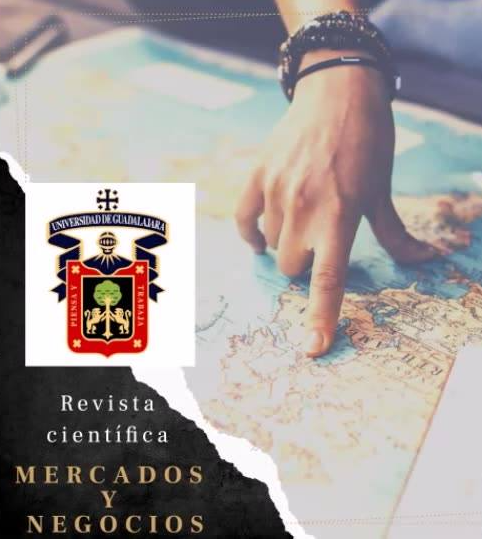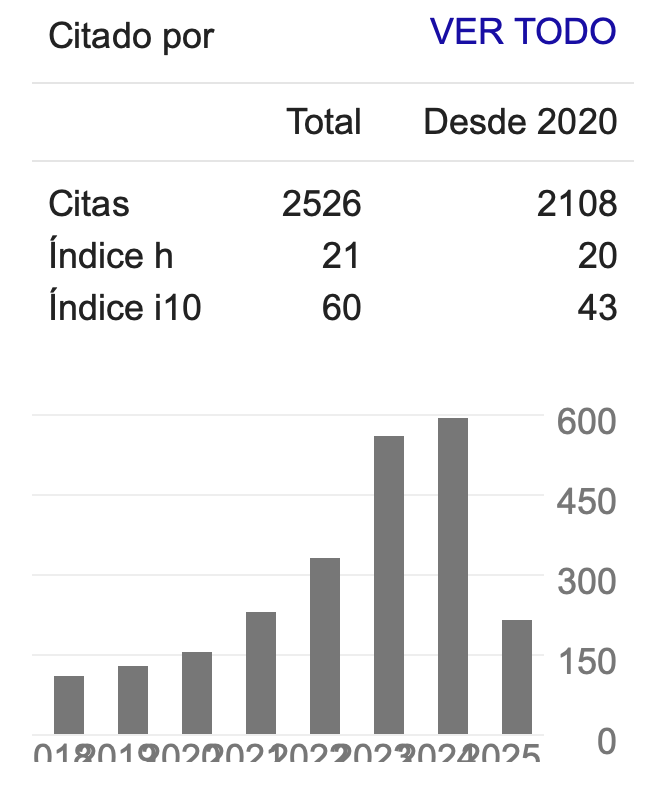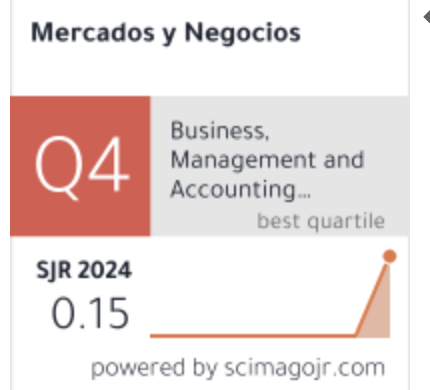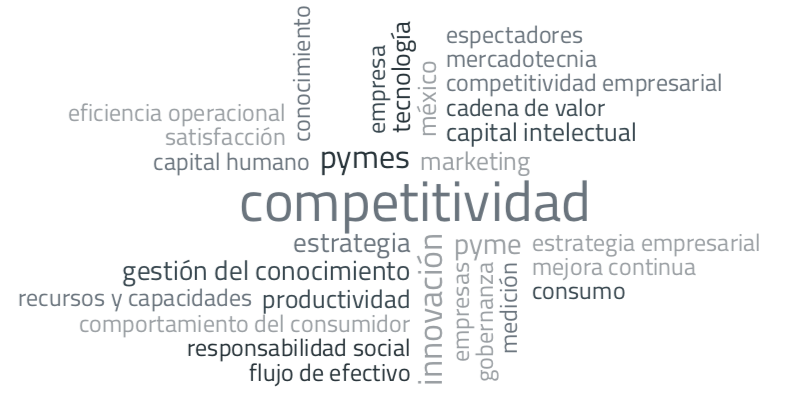Impacto de herramientas de mejora en la eficiencia operacional y responsabilidad ambiental en plantas de manufactura de México
DOI:
https://doi.org/10.32870/myn.v0i28.5253Keywords:
manufactura esbelta, manufactura sustentable, mejora continua, eficiencia operacional, responsabilidad ambiental, ecuaciones estructurales, mínimos cuadrados parciales.Abstract
se propone un modelo matemático para interrelacionar empíricamente las variables manufactura esbelta, la manufactura sustentable y la mejora continua con la eficiencia operacional y responsabilidad ambiental en plantas de manufactura discreta de apodaca, nl, México. Dada la complejidad de las interrelaciones del modelo propuesto, se establece que éste sea estimado mediante la técnica estadística de modelación con ecuaciones estructurales basadas en mínimos cuadrados parciales, utilizando indicadores formativos, y empleando el instrumento de medición propuesto por los autores en un estudio ya publicado.References
Amin, M. A., & Karim, M. A. (2013). A time-based quantitative approach for selecting lean strategies for manufacturing organisations. International Journal of Production Research, 51(4), 1146-1167.
Arrieta Posada, J. G., Botero Herrera, V. E., Martínez, R., & Jimena, M. (2010). Benchmarking sobre Manufactura Esbelta (Lean Manufacturing) en el sector de la confección en la ciudad de Medellín, Colombia. Journal of Economics, Finance and Administrative Science, 15(28), 141-170.
Saleeshya, P. G., Austin, D., & Vamsi, N. (2013). A model to assess the lean capabilities of automotive industries. International Journal of Productivity and Quality Management, 11(2), 195-211.
Bednarek, M., & Fernando, N. (2009). Methodology Proposal for the Implemen-tation of Lean Manufacturing System in Selected Mexican Industrial Plants.Economics and Organization of Future Enterprise, 6(4), 23-34.
Bergmiller, G. G., McCright, P. R., & Weisenborn, G. (2011). Lean and sustainability programs: Evidence of operational synergy for lean manufacturers and logical growth toward sustainability. Review of Business Research, 11(5), 58-68.
Bodenhamer, G. (2011). On the road to sustainability you're going to need a map. Plant Engineering, 65(2), 36-39.
Boyle, G. (1996). Renewable Energy: Power for a Sustainable●. Oxford University Press, USA, 1996●.
Cardozo, E. R., Rodríguez, C., & Guaita, W. (2011). Las Pequeñas y Medianas Empresas Agroalimentarias en Venezuela y el Desarrollo Sustentable: Enfoque basado en los Principios de Manufactura Esbelta. Información tecnológica,22(5), 39-48.
Coelho, P. S., & Henseler, J. (2012). Creating customer loyalty through service customization. European Journal of Marketing, 46(3/4), 331-356.
Cooper, R., & Maskell, B. (2008). How to manage through worse-before-better.MIT Sloan management review, 49(4), 58.
Cottyn, J., Van Landeghem, H., Stockman, K., & Derammelaere, S. (2011). A method to align a manufacturing execution system with Lean objectives.International Journal of Production Research, 49(14), 4397-4413.
Ghosh, M. (2012). Lean manufacturing performance in Indian manufacturing plants. Journal of Manufacturing Technology Management, 24(1), 113-122.
Morales, E. G. Lean manufacturing como estrategia de competitividad para las Pymes industriales del estado de Tlaxcala.
Hair, J. F., Ringle, C. M., & Sarstedt, M. (2011). PLS-SEM: Indeed a silver bullet. Journal of Marketing theory and Practice, 19(2), 139-152.
Henseler, J., Ringle, C. M., & Sinkovics, R. R. (2009). The use of partial least squares path modeling in international marketing. Advances in international marketing, 20(1), 277-319.
Hock, C., Ringle, C. M., & Sarstedt, M. (2010). Management of multi-purpose stadiums: Importance and performance measurement of service interfaces.International Journal of Services Technology and Management, 14(2-3), 188-207.
Hall, T. J. (2011). The triple bottom line: what is it and how does it work?.Indiana business review, 86(1), 4.
Imai, M. (1986). Kaizen: La Clave de la Ventaja Competitiva Japonesa, 1era.Ed, CECSA, DF México.
Jiang, Z., Zhang, H., & Sutherland, J. W. (2012). Development of an environmental performance assessment method for manufacturing process plans. The International Journal of Advanced Manufacturing Technology, 58(5-8), 783-790.
Kidwell, M. (2006). Lean manufacturing and the environment. Target, 22(6), 13-18.
Koenigsaecker, G. (2012). Leading the lean enterprise transformation. CRC Press.
Lee, S. (2012). The impact of manufacturing practices on operational performance. Review of business research, 12(5), 184-189.
Liker, J., & Convis, G. L. (2011). The Toyota way to lean leadership: Achieving and sustaining excellence through leadership development. McGraw Hill Professional.
Millar, H. H., & Russell, S. N. (2011). The adoption of sustainable manufacturing practices in the Caribbean. Business Strategy and the Environment, 20(8), 512-526.
Hopkins, M. S., Townend, A., Khayat, Z., Balagopal, B., Reeves, M., & Berns, M. (2009). The business of sustainability: what it means to managers now. MIT Sloan Management Review, 51(1), 20.
Haanaes, K., Arthur, S., Balagopal, B., Kong, M. T., Reeves, M., Velken, I., ... & Kruschwitz, N. (2011). Sustainability: the ‘embracers’ seize advantage. Findings from the 2010 Sustainability & Innovation Global Executive Study and Research Project. MIT Sloan Management Review and The Boston Consulting Group (available at http://c0426007. cdn2. cloudfiles. rackspacecloud. com/MIT-SMR-BCG-sustainability-theembracers-seize-advantage-2011. pdf).
Kiron, D., Kruschwitz, N., Haanaes, K., Reeves, M., & Goh, E. (2013). The innovation bottom line. MIT Sloan Management Review, 54(3), 1.
Monge, C., Cruz, J., & López, F. (2013). Impacto de la manufactura esbelta, manufactura sustentable y mejora continua en la eficiencia operacional y responsabilidad ambiental en México. Información tecnológica, 24(4), 15-32.
Murugesan, T. K., Kumar, B. S., & Kumar, M. S. (2012). Competitive advantage of world class manufacturing system (WCMS)–A study of manufacturing companies in south India. European Journal of Social Sciences,29(2), 295-311.
Pérez Rave, J., La Rotta, D., Sánchez, K., Madera, Y., Restrepo, G., Rodríguez, M., ... & Parra, C. (2011). Identificación y caracterización de mudas de transporte, procesos, movimientos y tiempos de espera en nueve pymes manufactureras incorporando la perspectiva del nivel operativo. Ingeniare. Revista chilena de ingeniería, 19(3), 396-408.
Ringle, C., Wende, S., & Will, A. (2005). Smart PLS 2.0 M3; Next generation path modeling software.
Rodríguez, I. (2011). Construya la eficiencia energética. Revista Manufactura Expansión México, 41-45.
Santiago, P. S., Barrera, M. A. R., Rodriguez, A. V., Alcaraz, J. G., & Socorro, A. (2009). TRENDS IN SIX SIGMA AND LEAN MANUFACTURING IN MEXICO INSIDE GLOBALIZATION.
Shook, J. (2010). How to change a culture: Lessons from NUMMI. MIT Sloan Management Review, 51(2), 63.
Suzaki, K. (1987). New manufacturing challenge: Techniques for continuous improvement. Simon and Schuster.
Toussaint, J. S., & Berry, L. L. (2013, January). The promise of Lean in health care. In Mayo Clinic Proceedings (Vol. 88, No. 1, pp. 74-82). Elsevier.
Vinodh, S., & Joy, D. (2012). Structural equation modelling of lean manufacturing practices. International Journal of Production Research, 50(6), 1598-1607.
Wills, B. (2009). Green intentions.
Womack, J. P., Jones, D. T., & Roos, D. (1991). The Machine That Changed the World: The Story of Lean Production: How Japan’s Secret Weapon in the Global Auto Wars Will Revolutionize Western Industry. New York: Rawson Associates.—1990.
Downloads
Published
How to Cite
Issue
Section
License
Mercados y Negocios by Department of Mercadotecnia y Negocios Internacionales. University of Guadalajara is licensed under a License Creative Commons Attribution-NonCommercial 4.0 International.
The author retains the copyright.








